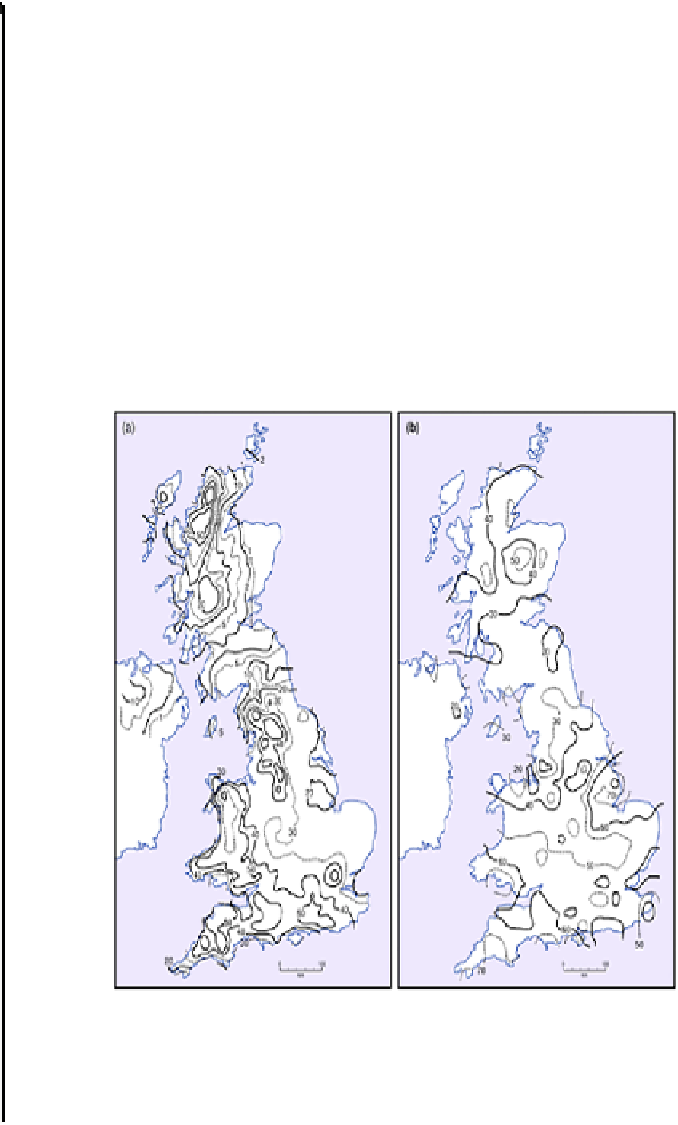Environmental Engineering Reference
In-Depth Information
are always susceptible to damage during storms, and much of south-east England was
without electricity for at least six hours between 03.00 and 09.30.
There were a number of other effects as winds damaged buildings, causing scaffolding
and even pieces of building fabric to collapse, in some cases causing fatalities. Many
glasshouses were destroyed by the force of the wind. Overall the storm proved a financial
nightmare to the insurance industry as well as causing major problems for the area
affected. Such explosive storms are a rare event in this part of the world though the
'Great Storm' of November 1703 was probably similar in magnitude.
Another slightly less intense storm affected Britain in October 2000. The main centre
of the low was over northern Scotland, but a secondary low spread across southern
England and accounted for most of the heavy rainfall and the high wind speeds in that
area (Figure 2). The heavy rain associated with this storm marked the start of a period of
serious flooding caused by frequent and deep depressions which affected much of
lowland England. The satellite image (Plate 6.1) shows the development of the secondary
low over south-west England.
Figure 2
(a) Total precipitation (mm) and (b) maximum wind gust
(knots) over the United Kingdom, 29 October 2000.
Source: Meteorological Office website.




